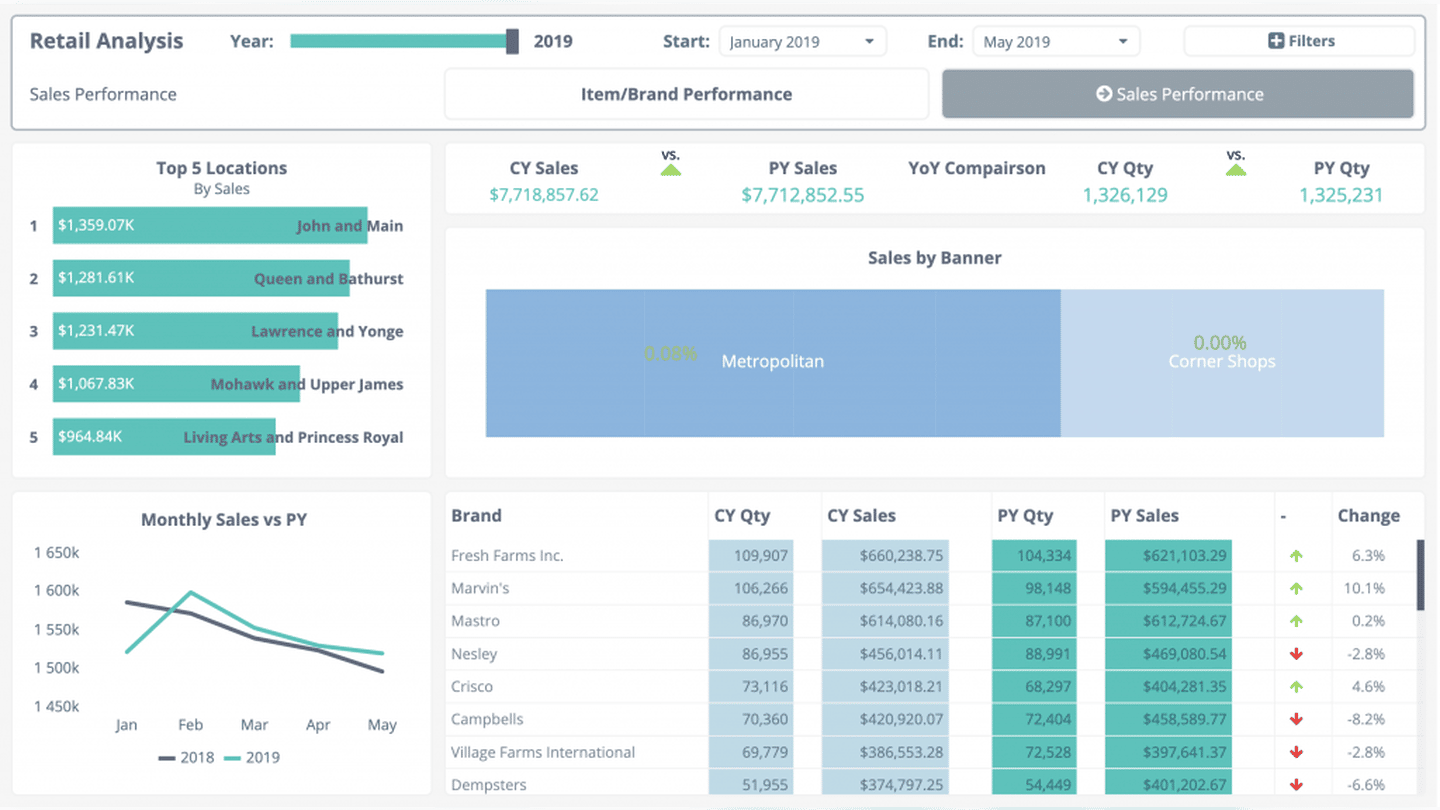If you’re looking to align your teams around common strategic objectives and give meaning to everyone’s work, the OKR (Objectives and Key Results) method deserves your attention. Adopted by Google, Netflix and hundreds of French companies, this approach is transforming the way you define and achieve your goals. In this guide, we take you through :
- The foundations of the OKR method, how to differentiate between objectives and key results
- Concrete benefits with examples of successful companies
- A step-by-step action plan for implementing OKRs in your organization
- Recommended tools for effective OKR management
- Mistakes to avoid to maximize your chances of success
Sommaire
What is the OKR method and why does it transform goal management?
The OKR method is based on a simple principle: define inspiring qualitative objectives accompanied by measurable key results. This approach enabled Google to multiply its size by 10, and La Société Générale to successfully merge with Crédit du Nord in just 1.5 months.
In concrete terms, you work with two complementary elements. The objective expresses your strategic intent in an inspiring way, such as “Become the leader in customer satisfaction”. Key results translate this ambition into verifiable metrics, such as “Achieve an NPS of 70” or “Reduce ticket resolution time to 24 hours”.
Clear definition of OKRs, objectives and key results
To understand the definition of OKRs, visualize this simple structure. A qualitative objective supported by 2 to 5 quantifiable key results. The objective gives direction, the key results measure progress.
Objective: Accelerate sales growth
Key results:
– Increase sales from €2m to €3m
– Acquire 150 new customers
– Achieve 95% customer satisfaction rate
This OKR method sets itself apart from traditional approaches through its simplicity and transparency. Unlike traditional objectives, which are often confidential, OKRs are shared throughout the organization.
Origins and history, from Intel to Google
The OKR method was born at Intel in the 1970s under the impetus of Andy Grove. Intel alumnus John Doerr introduced it to Google in 1999, when the company had just 40 employees. The result: exponential growth accompanied by this method. Today, Netflix uses it for its transformation towards streaming, Intel for its product innovations, and in France, Renault Group has generalized it to its 13 departments to steer its transformation.
Differences between objectives and key results
Here’s how to make a clear distinction between these two components. Understanding this foundation is essential to successfully managing your strategy:
| Objectives | Key results |
|---|---|
| Qualitative and inspiring | Quantitative and measurable |
| Provides direction | Measures progress |
| Stable over time | Evolve according to priorities |
| Example: “Become market leader | Example: “Achieve 25% market share”. |
How OKRs differ from other systems
OKR-based corporate strategy emphasizes collaboration over control. Unlike traditional KPIs used for individual assessment, OKRs create a framework for collective alignment.
Sacha & Co is a perfect illustration of this difference. By empowering their teams with clear objectives and key results, they have increased their sales by 150% in 2 years. Transparency replaces supervision, autonomy replaces micro-management.
Why adopt OKRs in your organization?
Companies that adopt OKRs see an average 20-30% increase in performance. More concretely, 76% of teams achieve their objectives, according to Weekdone studies. But beyond the numbers, it’s the cultural transformation that counts. Décathlon has aligned its store teams with national objectives, drastically improving consistency of action. Veolia Water now prioritizes its local projects, with a new ability to measure the achievement of objectives through concrete results.
- Strategic alignment, your first benefit: Implementing the OKR method immediately transforms your strategic alignment. Every employee understands how his or her day-to-day work contributes to overall objectives. This clarity eliminates scattered efforts and strengthens team cohesion.
- Greater transparency and accountability: OKRs make your actions measurable and transparent. Each team follows its own progress and that of others, naturally stimulating collaboration. This visibility boosts motivation by giving meaning to everyone’s work.
- Focus on the essentials: defining objectives according to OKRs forces you to prioritize. By limiting the number of objectives (to a maximum of 3-5), you avoid the dispersion that paralyzes some organizations. This constraint becomes an asset as your teams focus on what really counts.
Leroy Merlin has structured its innovation and digital transformation efforts in this way. Rather than spreading their resources over 20 projects, they are focusing on 5 ambitious objectives with clear key results.
Identifying the right intention, when to use OKRs?
However, not all companies are ready. This method works best in organizations open to change, with a culture of feedback and committed management. Assess your context before taking the plunge. Start-ups use them to structure their rapid growth, scale-ups to manage their transition to greater complexity, and large groups to simplify their cascade of objectives. MeilleursAgents, for example, has maintained its agility during strong growth.
Assess your organization’s maturity
Before implementing OKRs, check these prerequisites. Your corporate culture must accept experimentation and learning through failure. Management must be willing to share objectives and accept transparency. And your project management must be mature enough to support shared objectives. If your organization still operates in watertight silos, start by developing collaboration before introducing OKRs.
My advice
Organize a meeting where each department presents its current objectives to the others. If this transparency poses a problem, both in terms of form and content, first work on your culture before adopting OKRs.
Common mistakes to avoid
Implementation failures often follow the same pattern. Avoid setting too many OKRs (dispersing your efforts), turning them into control tools (killing the collaborative spirit), or remaining too rigid in application (preventing adaptation). OKRs should be seen as a means of sharing and setting a guideline so that all teams are pulling in the same direction. They must never be used as HR elements to evaluate individual success. Weldom has successfully adapted by keeping the method simple and focused on action. They have avoided the trap of bureaucracy by keeping objectives clear and rituals light.
1. Setting more than 5 goals per quarter
2. Creating objectives that are too vague or unattainable
3. Linking OKRs to individual appraisals
4. Forget regular communication
5. Turn OKRs into an administrative to-do list
Implementing OKRs efficiently
Here’s your roadmap for successfully implementing OKR methods in your company. Follow these progressive steps, tested with dozens of companies. The aim is to achieve results in your first quarters.
Step 1: Define your working environment
Start by establishing the rules of the game. Choose a quarterly rhythm for your objective key results. This is the most effective standard. Decide who will participate in defining the objectives: management alone (not advisable), the teams involved, or a hybrid approach. Plan your rituals now: definition meeting at the start of the quarter, fortnightly check-ins, review at the end of the period. Block these slots in all agendas even before you define your first OKR.
Step 2, create your first corporate OKRs
Bring your management team together to define 3 to 5 corporate objectives. Start with your strategic vision and formulate inspiring intentions. For example, “Become the market leader” rather than “Increase sales by 15%”.
For each objective, define 2 to 4 measurable key results. Use the 70% rule: your key results should be ambitious but 70% achievable. Lower = not challenging enough, higher = discouraging.
Step 3, turn it into a team OKR
Organize departmental workshops to define key results objectives. Each team proposes its own key results in line with global priorities. This co-construction strengthens commitment and guarantees feasibility. Here again, be logical in your construction. It’s essential that everything fits together.
Step 4: Integrate your rituals
Transform your existing meetings. Start each weekly meeting with a quick update on progress, green/orange/red status and priority actions. Dedicate 30 minutes of your fortnightly meetings to in-depth analysis.
Organize your quarterly reviews as moments of celebration and learning. Analyze successes, understand failures, adjust for the next quarter. This regularity anchors the method in your culture. Be careful to remain impartial: the aim is not to point the finger at mistakes, but to motivate and build on the work.
Going further
OKR management tools and platforms
Choosing the right tool can accelerate your adoption of OKRs. But beware: the tool does not replace the method. We’ve seen companies fail by focusing on technology rather than cultural adoption.
Overview of recommended solutions
Here are the tools we recommend, depending on your context.
- Monday.com excels for SMEs just starting out: intuitive interface, simple OKR tables with groups / objectives and key elements / results. Conditional coloring gives immediate visibility.
- Notion remains the most adaptable and simple solution on the market, with templates designed for this purpose.
- Asana is ideal for project teams used to this ecosystem. Its automated tracking and advanced integrations make it easy to link objectives, results and daily tasks.
- Supermood stands out for its human approach, perfect for companies that place a premium on employee engagement.
- Jira Align integrates naturally into tech environments using the Atlassian ecosystem.
- Excel / Spreadsheets remains the basis, which works perfectly well as long as you have a good command of these programs.
Selection criteria for your tool
When building your toolbox, prioritize simplicity over sophistication. Your tool must integrate with your existing ecosystem (CRM, project management tools, communication platforms). Ease of use takes precedence over advanced features. Your teams should adopt the tool in less than a week. Test the solution with a pilot group before rolling it out on a large scale.
My advice
Start with a simple Excel spreadsheet for your first 2 quarters. Once the method is established, migrate to a dedicated tool. This approach avoids technological overload.
Efficiently measure your OKR
Modern tools offer sophisticated dashboards, but stay focused on the essentials. Use simple scores (0-100%) to visualize the achievement of your objectives. Use conditional coloring (red = in danger, orange = caution, green = on the right track). This visual simplicity facilitates rapid decision-making in meetings.
OKR, miracle method or pitfall to avoid?
Let’s face it, OKRs are not a miracle solution. They require discipline, regularity and constant adaptation. Some companies fail by trying to apply the method too rigidly, others by turning it into a control tool. Netflix, for example, has had to adapt the method several times to suit its corporate culture. Their transformation to streaming has been accompanied by constant adjustments.
Limits to be aware of before starting
The OKR method can create excessive pressure if it’s badly calibrated. Beware of measurable key results that push your teams to prioritize numbers over quality. This drift transforms a collaboration tool into a control system. Another risk is bureaucracy. If your teams spend more time reporting than acting, you’ve lost the spirit of OKR. Keep the method simple and focused on action.
Avoid administrative overload
The main pitfall is turning OKRs into an administrative to-do list. Stick to the 3-5 rule: maximum 3-5 objectives with 2-5 key results each. Keep your rituals light. 15 minutes for weekly meetings, 30 minutes for fortnightly check-ins. If you exceed these times, simplify your approach. If your teams spend more than 2 hours a week on OKRs (monitoring, reporting, meetings), you’re overloaded. Reduce the number of objectives or simplify the follow-up.
Compare and choose, OKR vs other approaches
Are you wondering whether OKRs will replace your KPIs or complement your current system? The answer depends on your context.
- OKR vs. KPI, a natural fit: OKRs and KPIs complement each other perfectly. Your KPIs measure ongoing operational performance (monthly sales, conversion rates, delivery times). OKRs target ambitious transformations (launching a product, conquering a market, digitizing a process). Use KPIs for day-to-day management and key results for strategic projects. This articulation gives you a complete vision of your performance.
- OKR vs. traditional management: Traditional management by objectives focuses on individual assessment and remuneration. Here, it’s more a question of collective alignment and learning through failure, with a more transparent, shared approach.
- OKR and agile methods: they are naturally linked to Scrum or SAFe. They provide the strategic vision that sprints then translate into concrete functionalities. Your quarterly key results feed your product backlogs. This compatibility makes key results a bridge between corporate strategy and operational execution. Perfect for teams already working in agile mode.
Your action plan to get started
You now have all the keys you need to decide whether OKRs are right for your context. As John Doerr says: “Ideas are easy, execution is everything”. Here’s your roadmap for getting started.
Start small, learn fast, adjust constantly. The companies that succeed in their transformation are those that accept imperfection at the outset and gradually achieve excellence. Your next 3 actions:
1. Define a maximum of 3 business objectives for your next quarter
2. Associate 2-4 key measurable resultswith each objective
3. Schedule your rituals: kick-off, check-ins, final review
This method is just a facilitator. It’s your commitment and that of your teams that will make the difference. Start now, adjust as you go, and get ready to transform your goal management.





